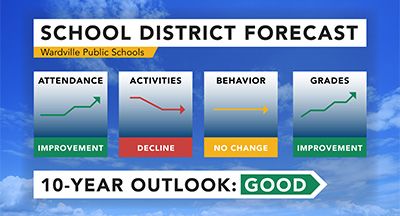Business Office Automation Changes K12 for the Better
#Business
Casey Thompson
by
Casey Thompson

|
Casey Thompson Web & Digital Media Manager |

|

|

|
 |
What business-office automation means
Business-office automation deals with the three R’s, too. It directs business-office staff to identify processes that are:- Repetitive
- Routine
- Resource-heavy
Once qualifying processes are identified, office personnel work with software providers to automate processes and transfer the data to accounting and operations programs.
These programs don't replace the people working to keep the district running smoothly, preventing fraud, and improving processes where possible. But they can do a great job driving business-office efficiency.
Why it’s important
Business-office automation is meant to help the entire organization do a better job managing budgets, allocating resources, dealing with uncertainty, and planning for the future.However, business-office automation has some specific benefits as well. For instance:
It can save money
According to a survey of accountants conducted by tech.co, respondents said that simple process automation applied to accounts payable produced an 80% increase in operational efficiency, with a 366% ROI.Obviously, your mileage may vary. But an ROI of even half that would be welcome news in many districts—and just the fact that there’s a smooth, automated process can generate rewards for your district.
Get to know ePayables
It helps prevent fraud
Much as we hate to admit it, fraud is a significant issue within many districts’ back office. (Not sure about yours? Take the 6-Step Fraud Test.)The Association of Certified Fraud Examiners’ 2020 Report to the Nations found that education experienced almost 100 fraud cases, with a median loss of $65,000 and total losses exceeding $28.6 million.
Top reasons for fraud included (multiple reasons cited cause the total to exceed 100%):
- Billing: 30%
- Corruption: 30%
- Expense reimbursement: 22%
- Skimming: 22%
It makes scarce resources go further
We’re not just talking about money. In the post-pandemic world, staffing and resource allocation are constant challenges.As SAP notes in its report, The Value of Automation in K-12 School’s Back-Office: “As K-12 school districts grapple with decreasing budgets and adapt to a new normal, they are looking to maximize scarce resources … Tech can allow them to do more with less.”
Meanwhile, employees are increasingly looking for flexibility, fulfillment, and accommodation—things that haven’t always been possible in a business office.
By using accounting automation to do simple things like track invoice progress and automate approvals, tech.co survey respondents said they saved up to 30% of the time it took to do the tracking manually.
In a school-district setting, that could allow employees to focus on much more fulfilling things—like helping kids.
It can help with compliance and auditing
Unlike many businesses, schools need to comply with a plethora of specialized regulations, and they’re regularly checked, audited, and evaluated on their compliance level.By doing the same thing the same way over and over, and building mandate compliance into the automation process, automated business practices make it easier to comply with fiscal regulations, and provide a more uniform output for documentation purposes.
If your edtech partner has a dedicated reporting department, it’s a good sign your processes are backed by the best software support.
Business-office automation and dedicated reporting resources combined can really smooth the audit process and generate efficiencies–especially when you consider that schools may process 100 to 1,000 reports a month.
It’s the trend
Automation is the future of financial management. Currently, according to tech.co, 29% of automated technology is used in accounting, while 23% of businesses expect to implement automation in the next several years.In addition, The New York Times reported that nearly eight in 10 corporate executives surveyed last year said they had implemented resource process automation, with another 16% saying they planned to do so within three years.
Where you can start
If you’re looking at automating some of the processes in your business office, here’s a basic road map to help you proceed.Start simple. Look for the low-hanging fruit—the tedious, dirty jobs that everyone hates.
Find a partner with experience in the educational space. See what they’ve done in other districts.
Move cautiously, communicate changes, and involve employees in discussions. The last thing you want is to have someone show up to work one day and find that their favorite end-of-month report is now being built by a computer.
Begin with the end in mind. Remember that your ultimate goal is providing children with the best possible education. Do things that reinforce your progress toward that goal.
As many districts have discovered, automation is nothing to be feared. And as resources continue to be strained and financial pressures mount, business-office automation is establishing itself as a valuable tool any district can implement and embrace.

|
Casey Thompson Web & Digital Media Manager |
|
|

|

|

|
 |










